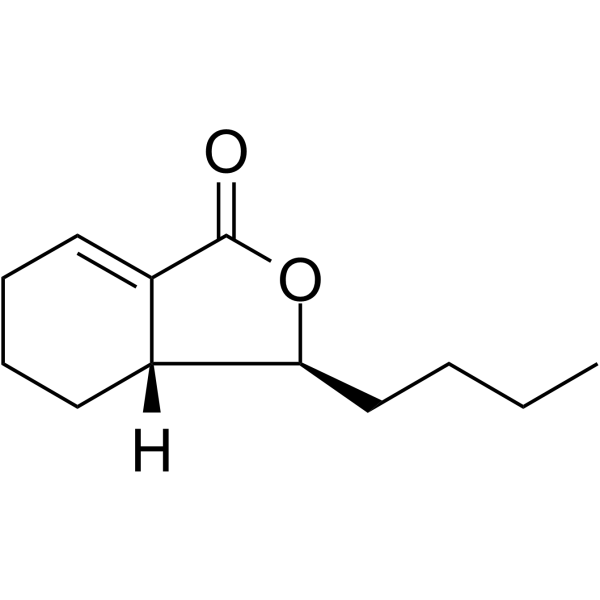
Neocnidilide
CAS No. 4567-33-3
Neocnidilide( —— )
Catalog No. M31694 CAS No. 4567-33-3
Neocnidilide is an alkyl phthalate derived from Rhizoma Ligustici Chuanxiong with the ability to inhibit the growth of mycotoxin-producing fungi and to kill insects.
Purity : >98% (HPLC)
 COA
COA
 Datasheet
Datasheet
 HNMR
HNMR
 HPLC
HPLC
 MSDS
MSDS
 Handing Instructions
Handing Instructions
| Size | Price / USD | Stock | Quantity |
| 5MG | 108 | In Stock |


|
| 10MG | 178 | In Stock |


|
| 50MG | Get Quote | In Stock |


|
| 100MG | Get Quote | In Stock |


|
Biological Information
-
Product NameNeocnidilide
-
NoteResearch use only, not for human use.
-
Brief DescriptionNeocnidilide is an alkyl phthalate derived from Rhizoma Ligustici Chuanxiong with the ability to inhibit the growth of mycotoxin-producing fungi and to kill insects.
-
DescriptionNeocnidilide is an alkyl phthalate derived from Rhizoma Ligustici Chuanxiong with the ability to inhibit the growth of mycotoxin-producing fungi and to kill insects.The LC50 value of Neocnidilide against D. melanogaster larvae was 9.9 μmol/mL.It enhances the skin penetration of benzoic acid.The LC50 value of Neocnidilide against D. melanogaster larvae was 9.9 μmol/mL.It enhances the skin penetration of benzoic acid.
-
In Vitro——
-
In Vivo——
-
Synonyms——
-
PathwayOthers
-
TargetOther Targets
-
Recptor——
-
Research Area——
-
Indication——
Chemical Information
-
CAS Number4567-33-3
-
Formula Weight194.27
-
Molecular FormulaC12H18O2
-
Purity>98% (HPLC)
-
Solubility——
-
SMILES——
-
Chemical Name——
Shipping & Storage Information
-
Storage(-20℃)
-
ShippingWith Ice Pack
-
Stability≥ 2 years
Reference
molnova catalog



related products
-
G244-LM
G244-LM is a potent and specific inhibitor of tankyrase 1/2 that inhibits Wnt signaling.
-
ADP-Ribosylation Fac...
ADP-Ribosylation Factor 1, ARF1 (2 - 17)
-
Deapi-platycodin D
Deapi-platycodin and platycodin D can regulate the production and secretion of airway mucin and.



 Cart
Cart
 sales@molnova.com
sales@molnova.com


